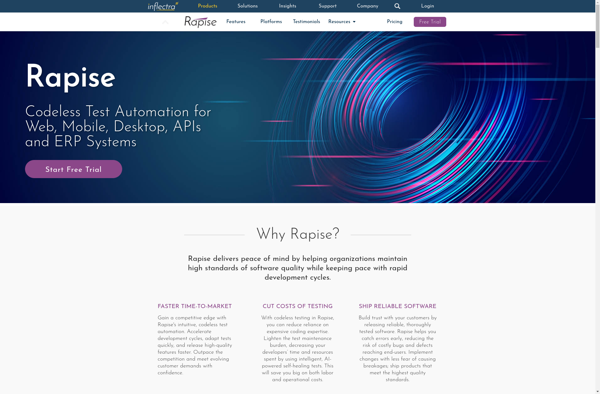Description: Watir is an open-source Ruby library for automating web browsers. It drives browsers the same way people do, enabling testing and scripting of web applications. Watir supports IE, Firefox, Chrome, Safari and Opera.
Type: Open Source Test Automation Framework
Founded: 2011
Primary Use: Mobile app testing automation
Supported Platforms: iOS, Android, Windows
Description: Rapise is an automated software testing tool that supports cross-browser testing and various application types like web, mobile, desktop, etc. It provides record and playback functionality to easily create tests without coding.
Type: Cloud-based Test Automation Platform
Founded: 2015
Primary Use: Web, mobile, and API testing
Supported Platforms: Web, iOS, Android, API

